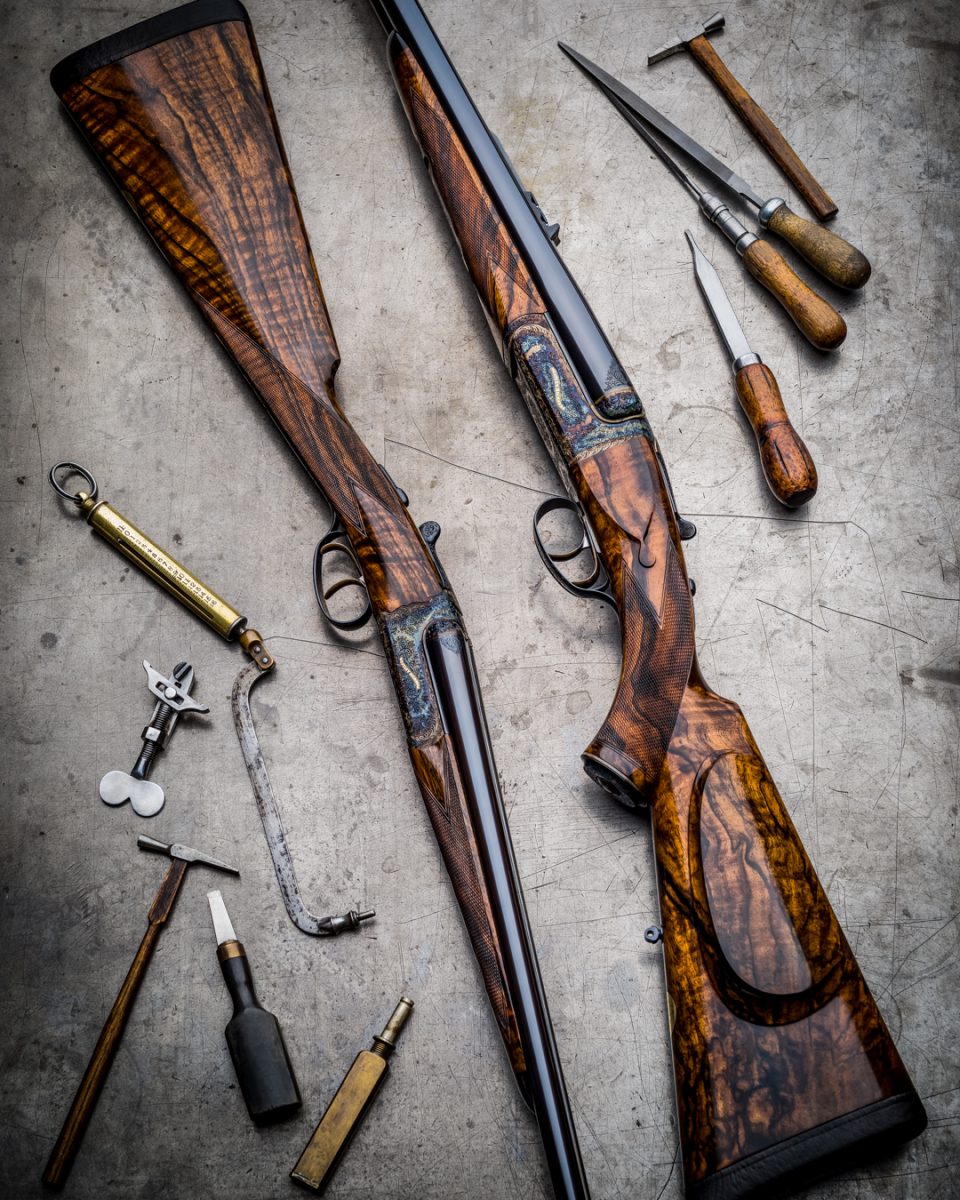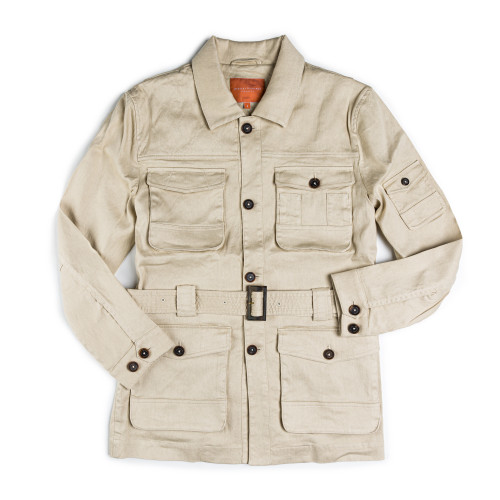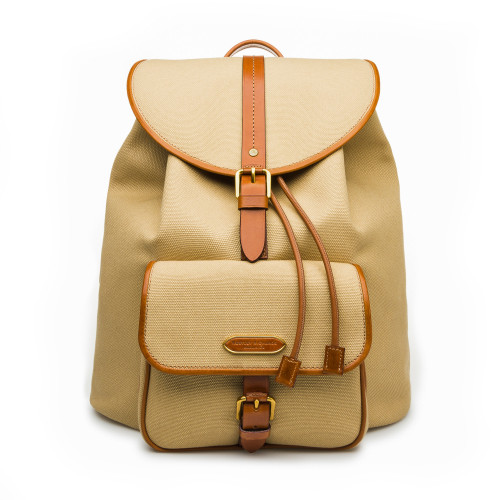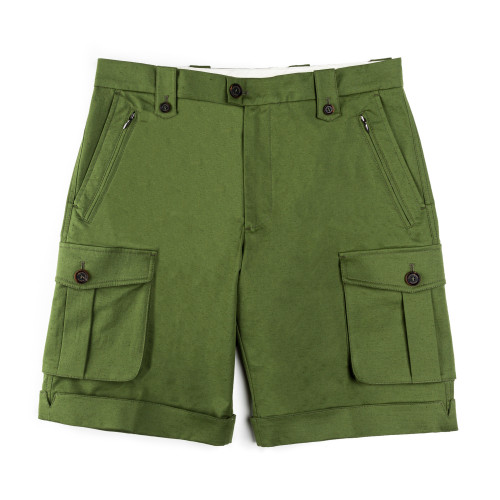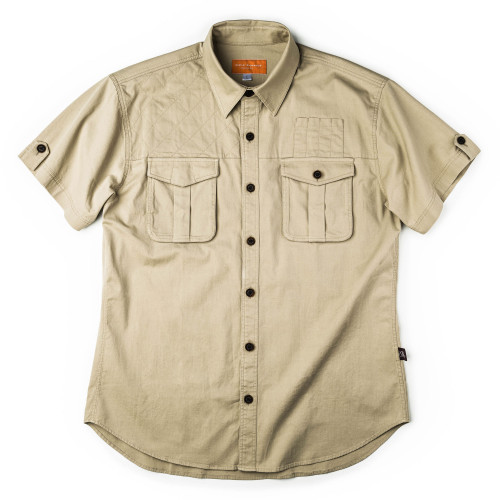As gunmakers, we have also assisted in the accumulation of large collections of presentation-grade sporting guns, ordered by wealthy individuals whose motivation goes beyond the practical and extends into the realms of art.
For today’s collectors, these, now disbursed, armories are the source of some of the most prized objects of desire. Many a rifle ordered by an Indian maharajah now graces the wall of a Texan ranch.
Gun collectors are an essential part of the market. It is their interest that generates the sales and services that keep a large part of the gun trade in employment, be they makers, gunsmiths, auctioneers or dealers.
We encounter a variety of collectors during the course of our business and it may surprise readers to discover that it is not necessary to be among the financial elite to get involved. Collections exist that are built around various themes. It may be illuminating to consider some of those here.
Collections Based on a Single Maker
This is a common inspiration. The collector develops a passion for a particular maker, becomes very immersed in the history of that maker and his wares.
The collection can extend across a wide range of guns made by that maker over the lifetime of the business. For that reason, the longer the firm has been in business, the greater the scope to build a large and varied collection. Ephemera associated with the business also comes into the collector’s purview and imparts value to small and otherwise uninteresting accessories like catalogues, oil bottles and loading tools.
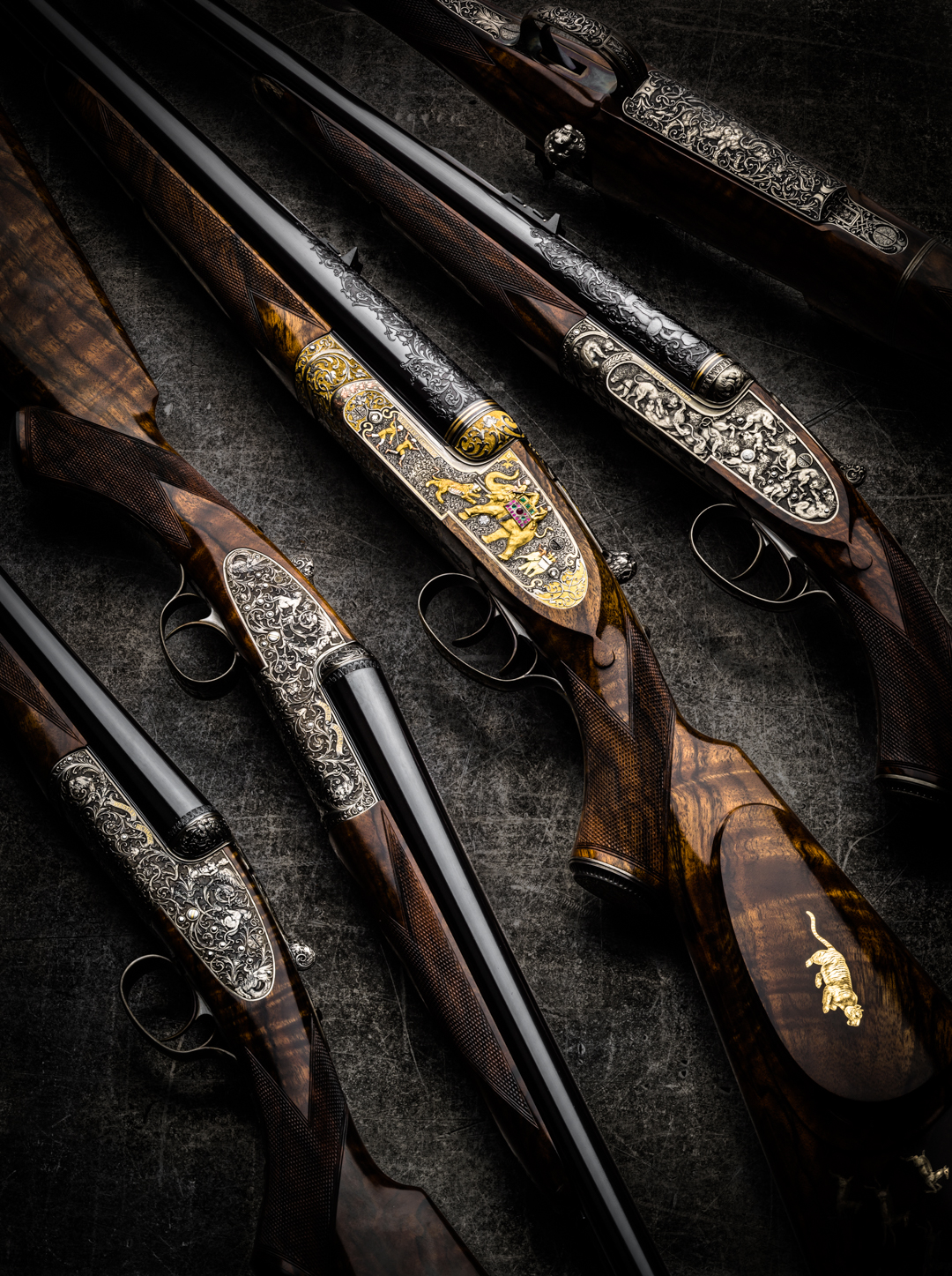
The wealthy collector will be tempted to focus on the big-name makers. They have the advantage of being long in business and wide in the range of guns made, as well as focused on the best quality end of the market, so such a collection can become large, interesting and beautiful, as well has having the cachet of the famous name.
A collection of Purdeys is likely to require a large financial outlay, which is fine if you have plenty of spare money to park in valuable assets, with an eye on appreciation over the decades.
To follow this path on a budget, it is sensible to settle upon a maker with a lesser profile. One collector we know has an impressive collection of William Powell guns, while another is wedded to Thomas Horsley. There are several provincial makers whose businesses spanned the more interesting decades of firearms development. Their wares could form the basis of a very interesting, yet relatively modestly priced collection.
Enthusiasm is often nurtured by owner's clubs. Some gun makers run their own clubs and events to this end. Surprisingly, one of the most active clubs is for owners of guns by Perrins, a long-demised gunmaker of Worcester. In the USA, the Parker and L.C. Smith owner's clubs are very active and have helped maintain interest in these makers.
Collections Based on a Theme
This categorization can be random. A collection of pin-fires, a collection of live-pigeon guns, a collection of guns made by a particular ‘maker to the trade’, a collection of black powder express rifles. We have seen them all as the inspiration for a collection.
In recent years, guns that fall under 'Section 58' of the Firearms Act have become of interest to British collectors, as they require no licence and can be displayed in full working order, as long as not intended for use.
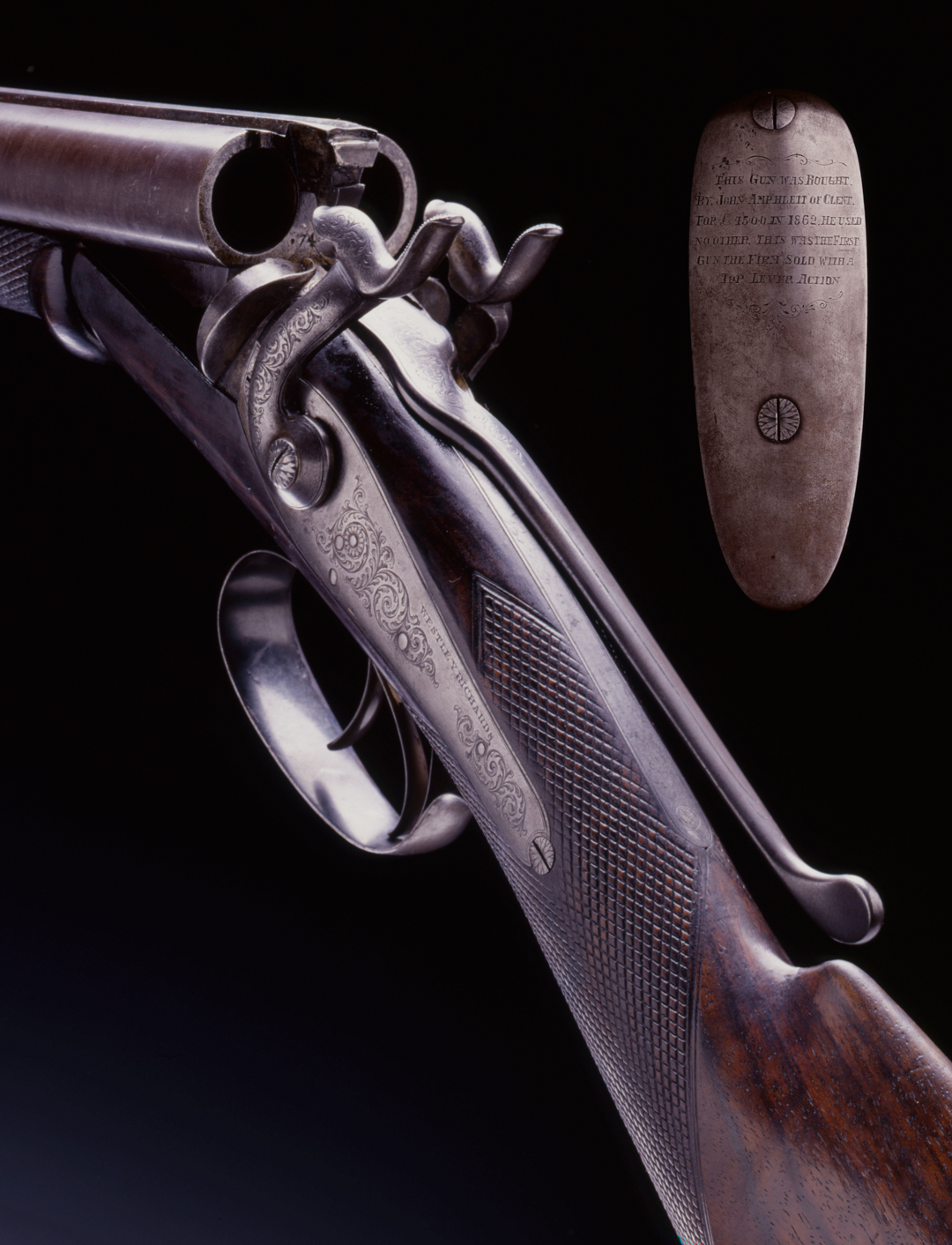
Collections Based on Provenance
One high-profile collection of which we are aware is based on firearms owned by famous hunters and sportsmen. Enthusiasts for these famous guns and rifles, many of which feature in books written by (or about) their owners have steadily driven up the prices of these for several years.
Provenance is a fickle mistress. Some ownership imparts little or no extra value to a firearm. We recall the over & under of a former boxer failing to sell at auction, likewise the Brownings of a former footballer. Fame alone is rarely sufficient. The connection has to be of significant relevance to famous hunters; all the better if they had other attributes.
Because best sporting guns were expensive and sport exclusive, a high percentage of those made were made for lords, dukes and earls, generals and politicians. While confirming such provenance is perhaps helpful in selling a gun with a ‘story’, it rarely adds pounds sterling to the price.
In order to do that, it helps if the owner is a first-rank royal (think King Edward VII) or a notable figure from history (think Winston Churchill) or a renowned hunter (think Denys Finch-Hatton).
The guns of Ernest Hemingway carry enhanced value way beyond their actual merit because the writer is so iconic in American literature – for his hunting exploits as much as for his literary prowess. Jim Corbett’s rifles are the stuff of dreams for some collectors. His .275 Rigby is now in the Rigby Museum and his Jeffery double rifle in a private collection in the United States.
In both cases, the Corbett provenance adds tens of thousands of dollars to their value. Bror Von Blixen’s Purdey double rifle is currently offered for sale at over $100,000; perhaps twice, or three times, its value sans-provenance.
Collections Based on Mechanisms
The most comprehensive collection is one based on the development of the sporting gun.
Given the massive number of patents taken out between 1800 and 1900, it is beyond the scope of most people to ever finish.
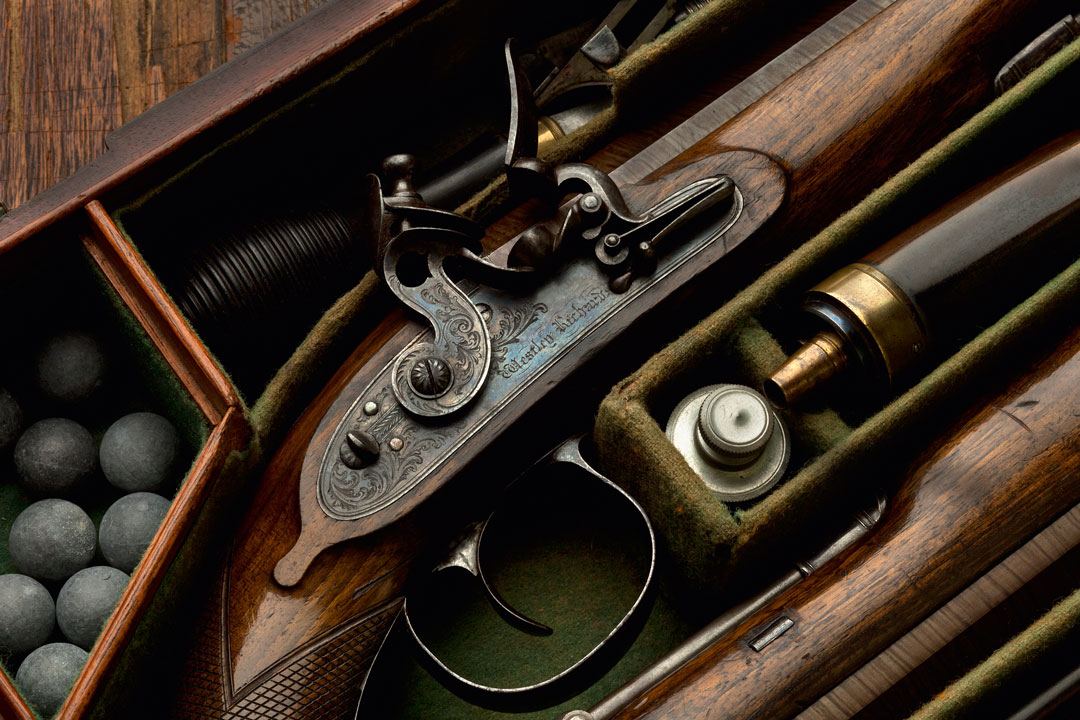
A beginner might seek a flintlock, then a percussion gun, than pin-fire, then a centre-fire, then a hammerless sidelock and a boxlock. From that basic set, could be added an inert action, a spring-activated action, a self-opener, a hammer ejector, a sidelock ejector, a trigger plate gun. From those basic formats there are countless innovations and variants.
Truly, a collection of different mechanisms might be impossible to ever complete. What such a collection has in its favour, apart from pure interest and the education it will provide, is the cheapness of it. Because the focus is on the mechanism, it can be built on either very good examples, or worn-out guns, according to budget.
Some collectors even reduce their scope to a single piece of the mechanism; the lock plate. The advantage of this type of collection is that it requires neither licence nor security and items can be displayed and studied without concern for safety or interference from the authorities.
Collections Based on Type
Some collectors are very much wedded to the idea of shooting their guns. Creating a gun-room for yourself containing a gun for every occasion is a project open to many, if built slowly.
It might consist of: a best sidelock ejector, a pigeon gun, a wild-fowling gun, a stalking rifle, a double rifle, perhaps a gun in each gauge from .410 to 12-bore. The scope can be as wide as the collector desires and such a collection, once made, is then improved as a better example of each type is discovered and the guns ‘traded –up’, thereby increasing a the quality and value of the collection over the years.
For most collectors, the search is a large part of the fun. The interest of fellow collectors is infectious and groups of friends and rivals inhabiting the same area of interest often drive a market for collectible guns upwards.
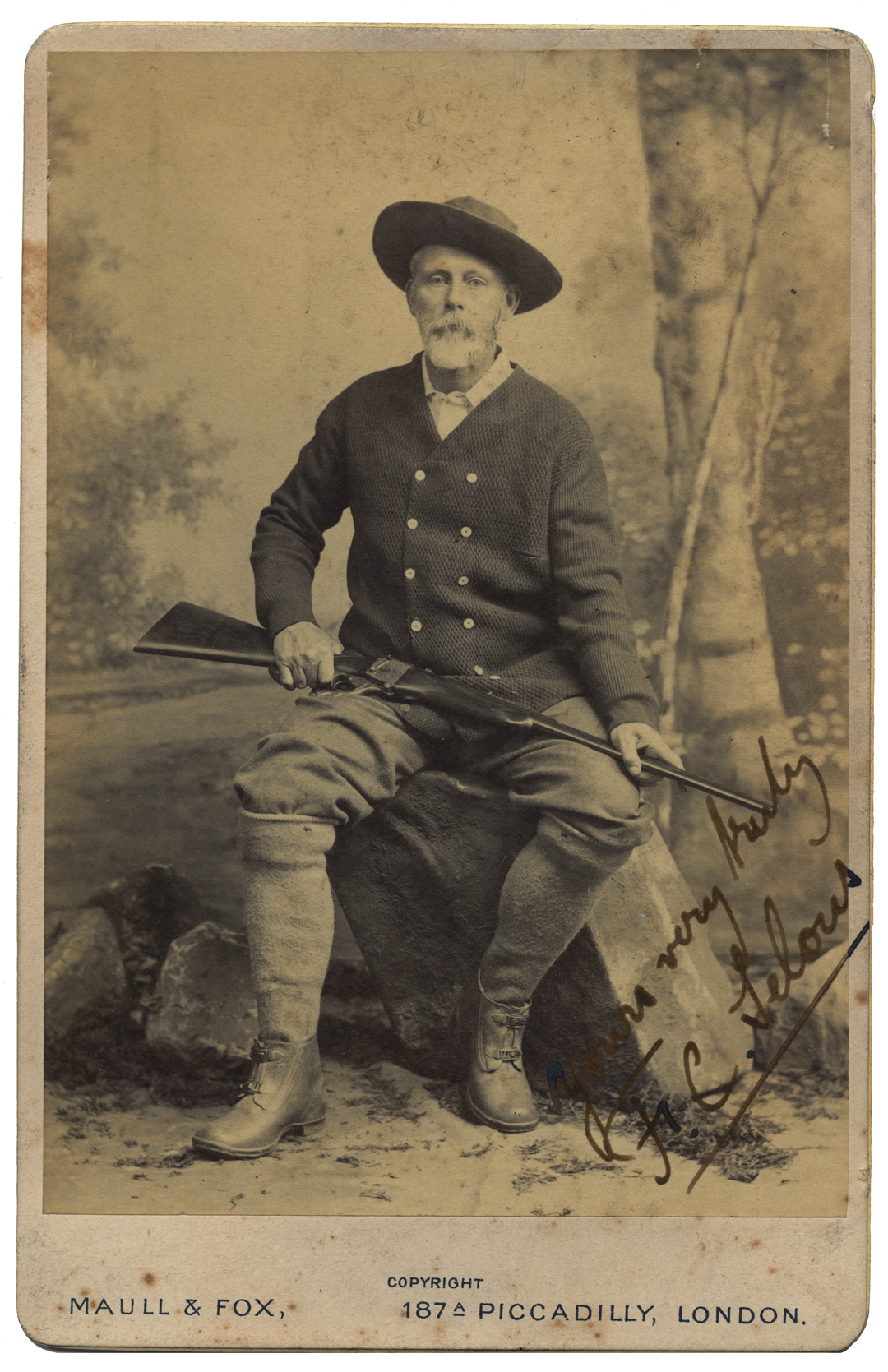
Conversely, the value of collections can drop, when big players lose interest, sell-up or die, flooding the market with items for which there may be a small pool of interested buyers.
However, for as long as men appreciate fine gunmaking and are fascinated by the creative solutions to problems invented by gun-makers, the future of collecting is secure.
Guns of real quality, interest and provenance will always find a market. Prices, like all commodities, fluctuate but there are always people on the fringes waiting for something they want to fall to their price point. Then, they act.
Many great collections have been built, dispersed and re-assembled into different collections. Collectors are the life-blood of our industry, holding the past in reverence and making the objects of the past relevant.
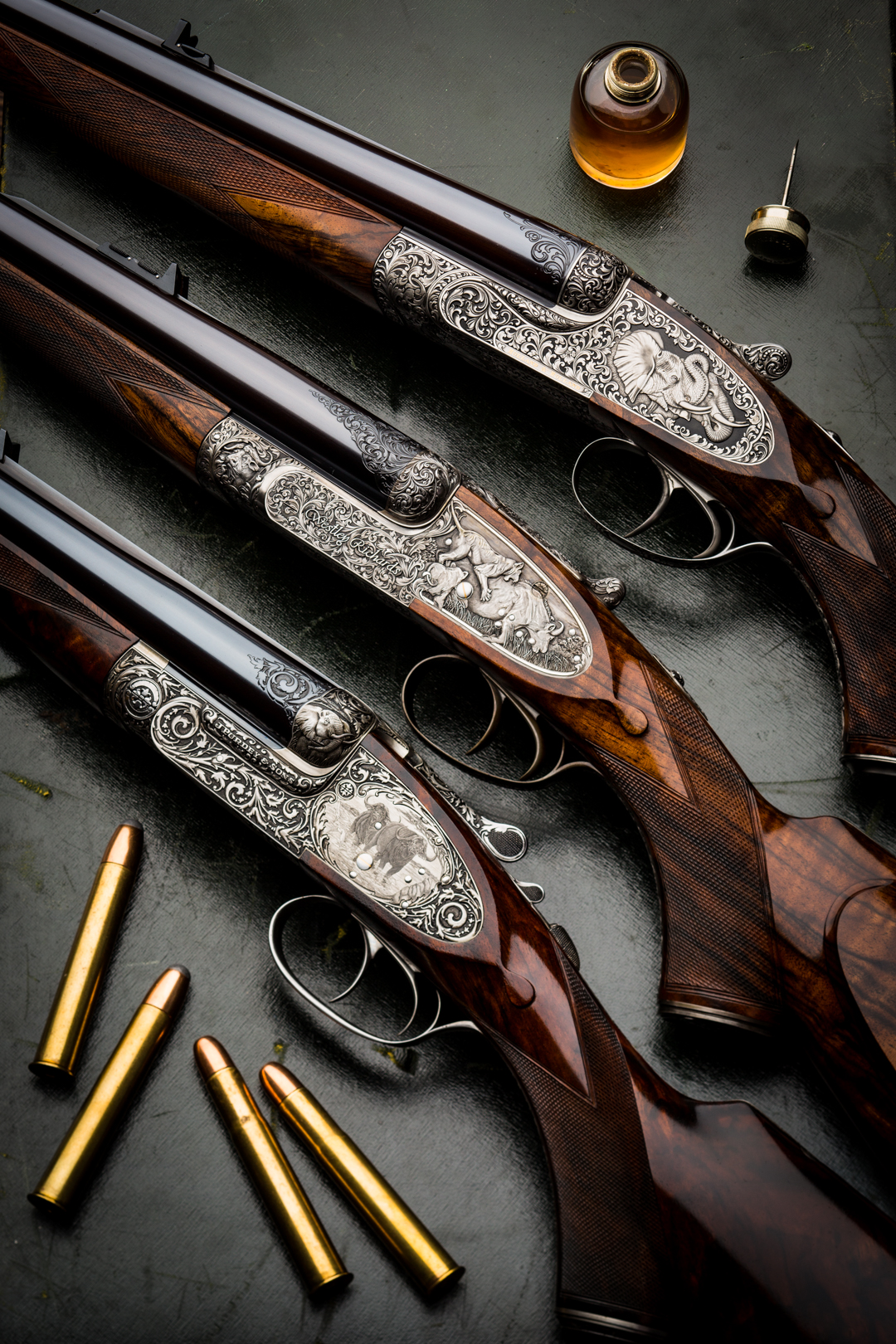
As we build guns and rifles for modern collectors, each one with it’s unique features and bespoke artistry, we cannot help but wonder where they will be and who will be appreciating them a century from now.
The Explora Blog is the world’s premier online journal for field sports enthusiasts, outdoor adventurers, conservationists and admirers of bespoke gunmaking, fine leather goods and timeless safari clothes. Each month Westley Richards publishes up to 8 blog posts on a range of topics with an avid readership totalling 500,000+ page views per year.
Blog post topics include: Finished custom rifles and bespoke guns leaving the Westley Richards factory; examples of heritage firearms with unique designs and celebrated owners like James Sutherland and Frederick Courtenay Selous; the latest from the company pre-owned guns and rifles collection; interviews with the makers from the gun and leather factory; new season safari wear and country clothing; recent additions to our luxury travel bags and sporting leather goodsrange; time well spent out in the field; latest news in the sporting world; and key international conservation stories.












